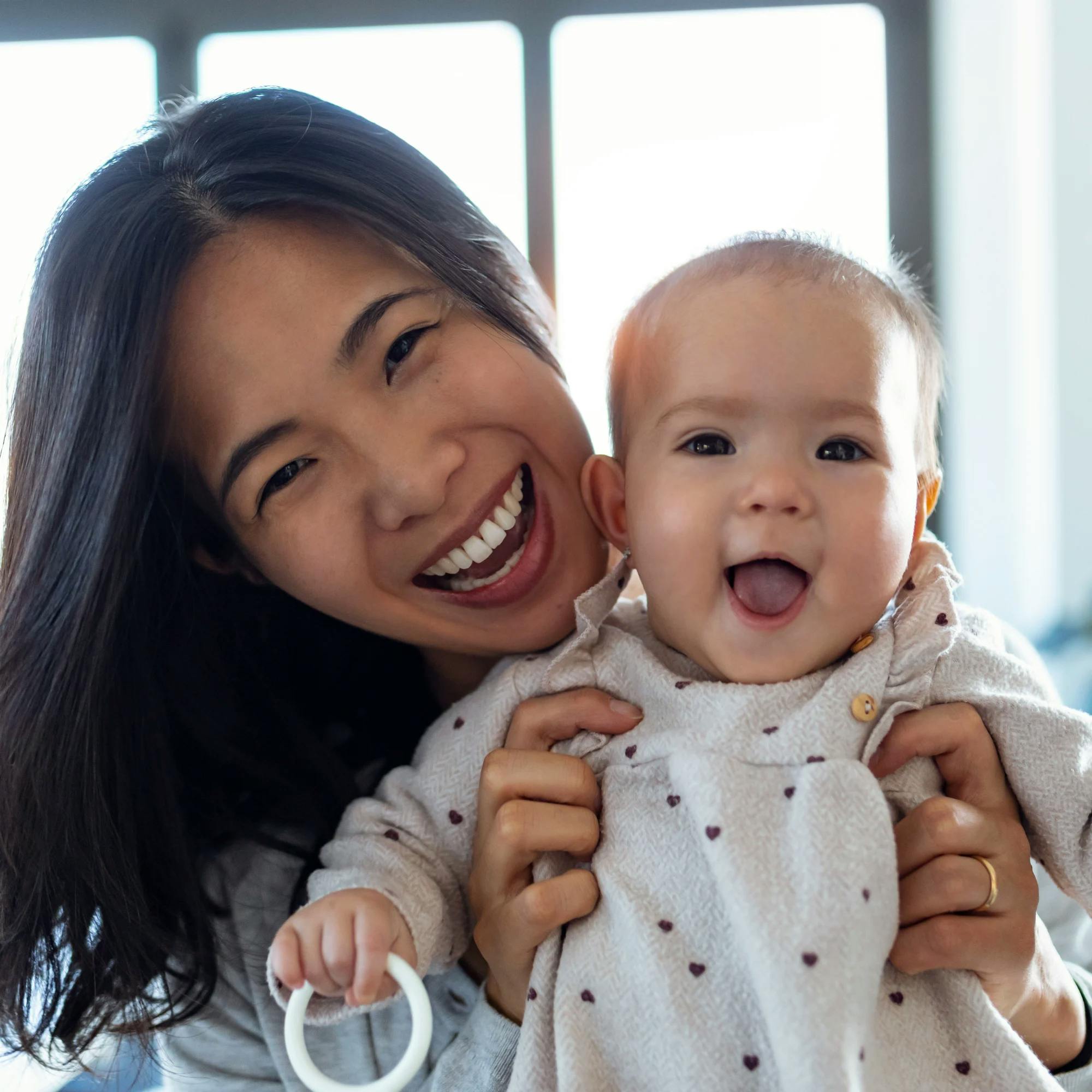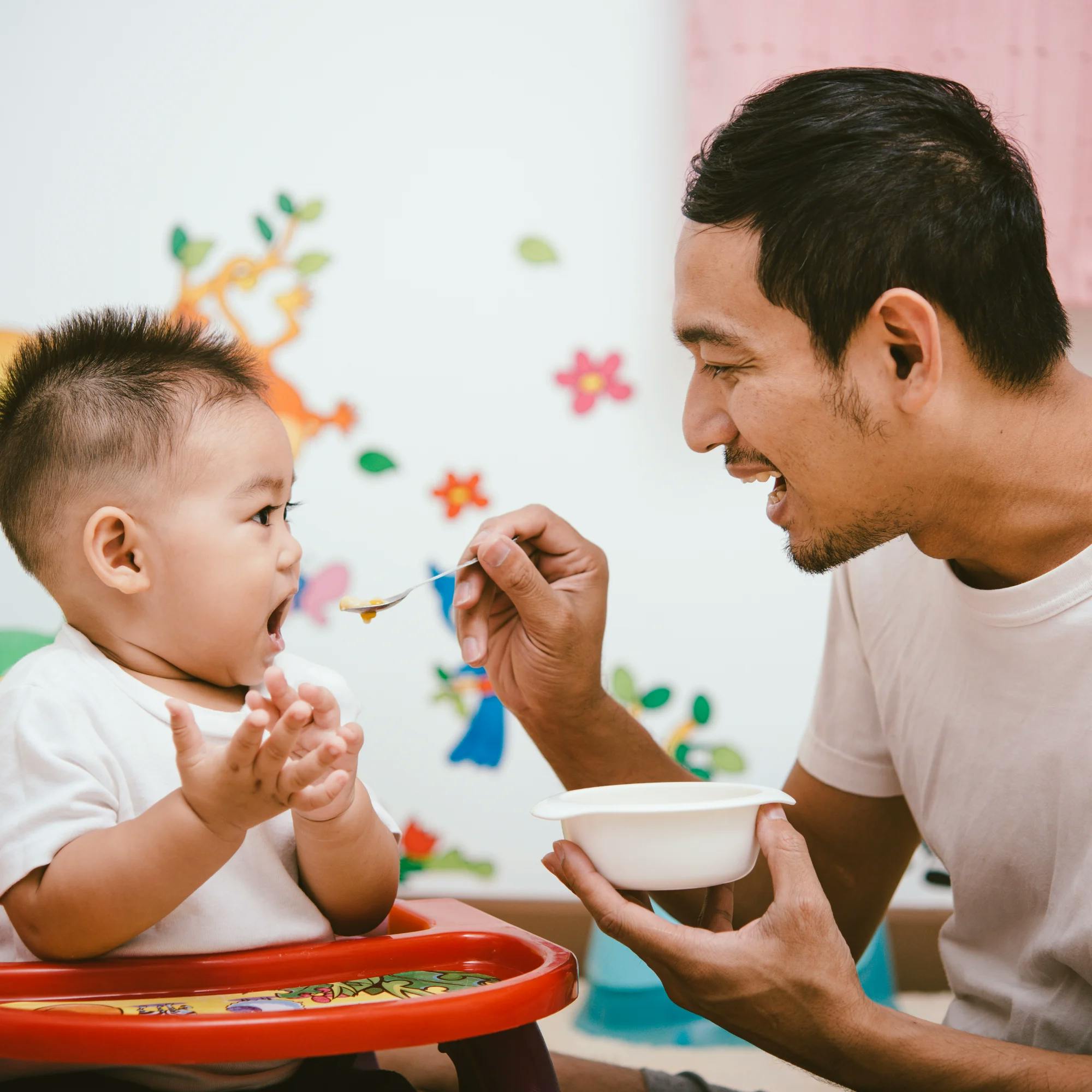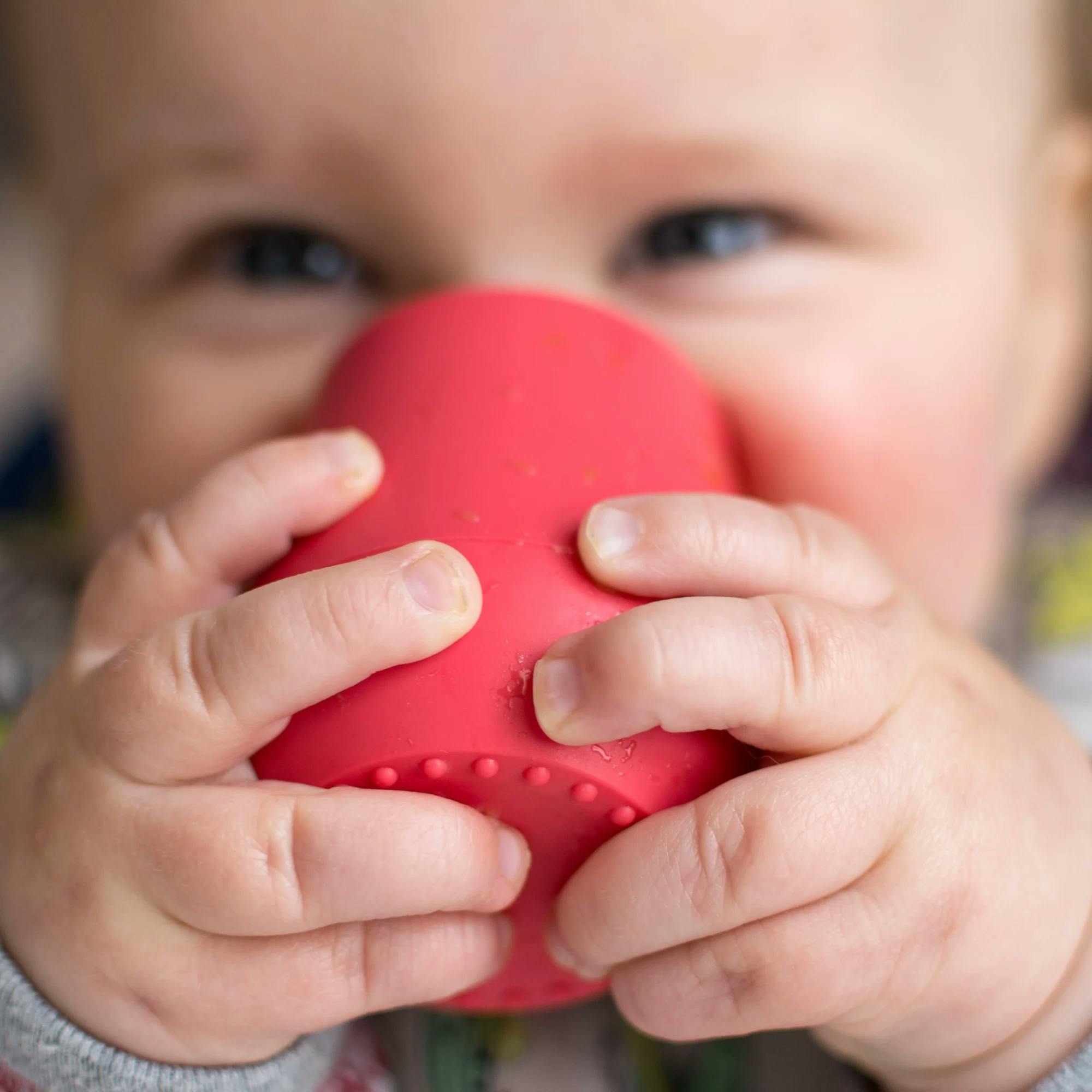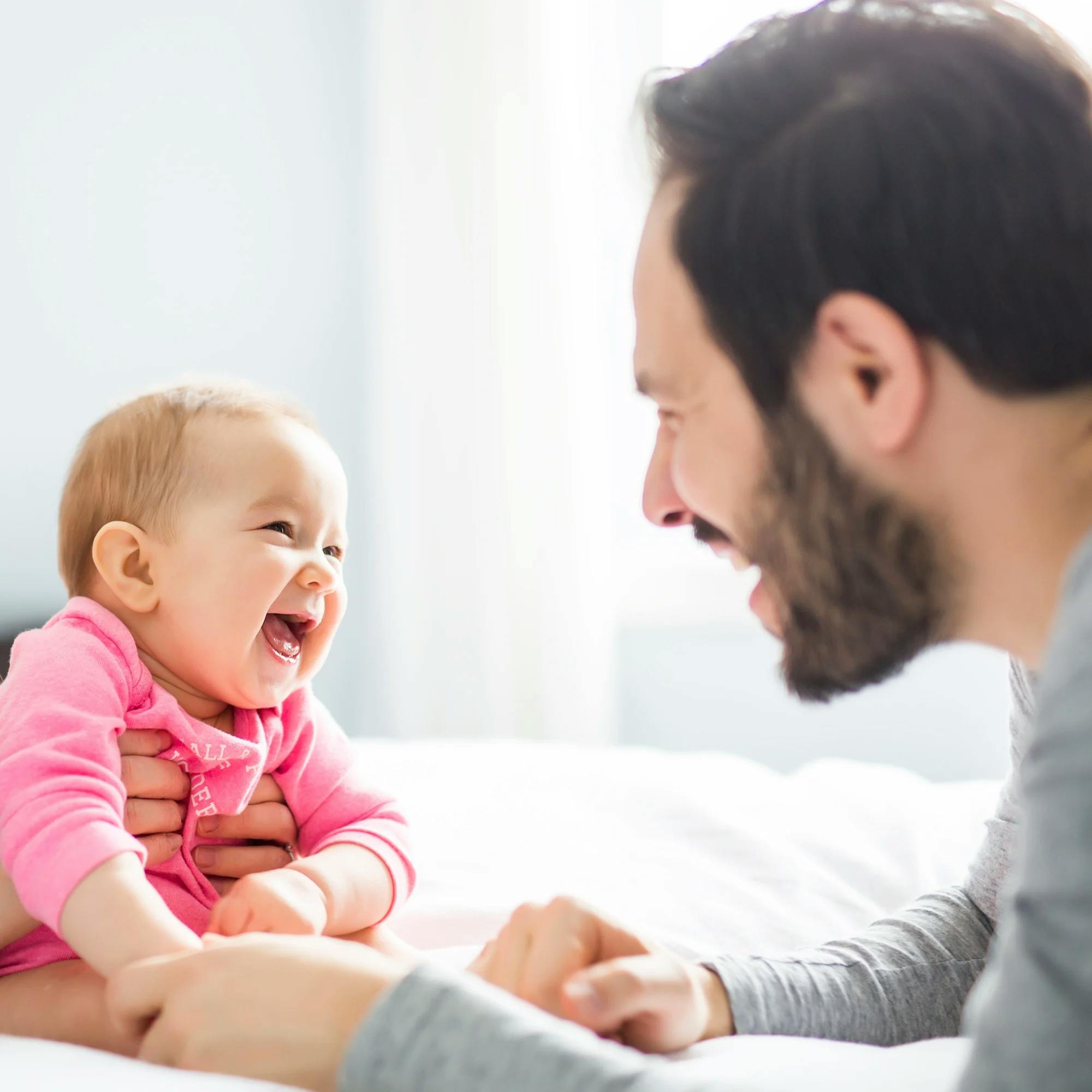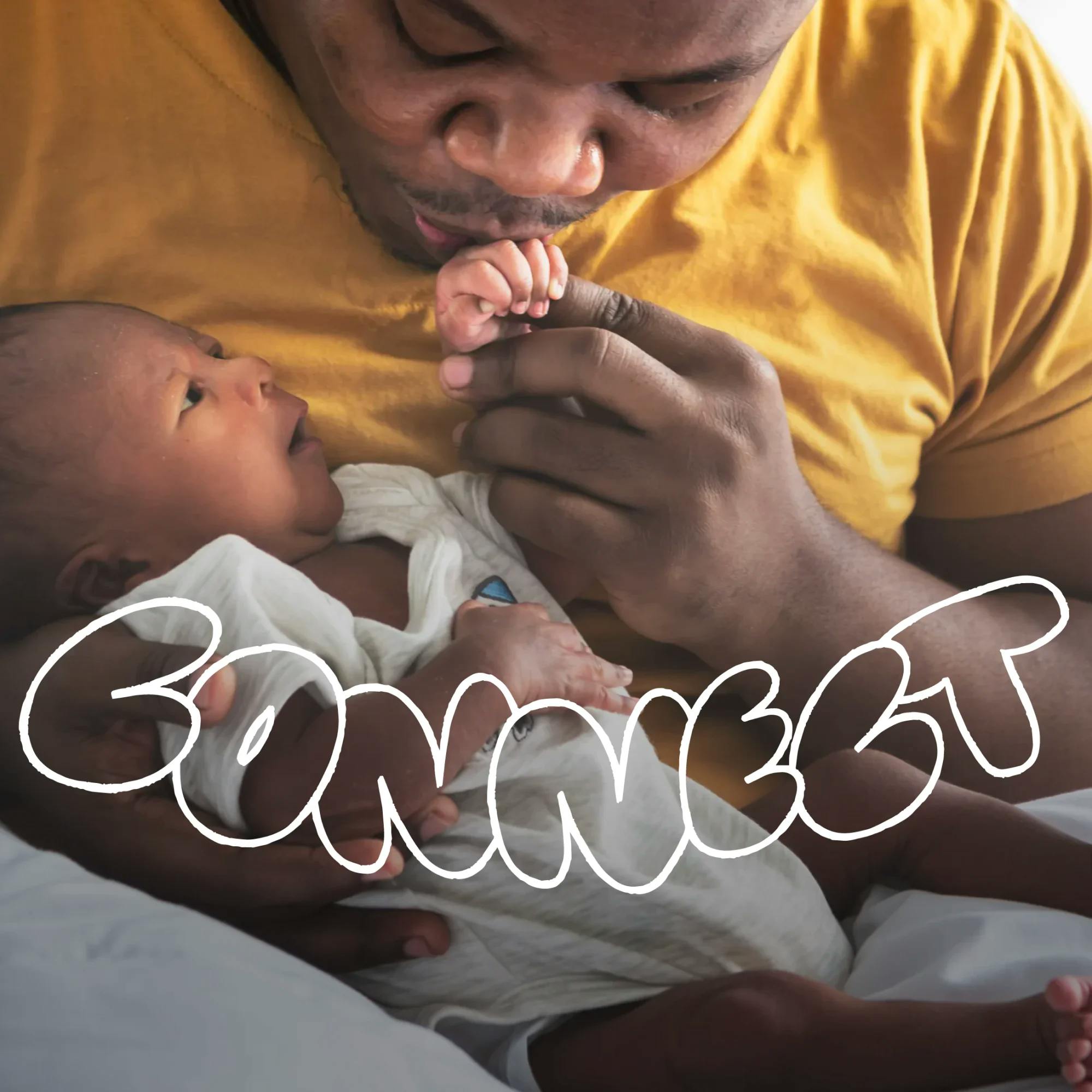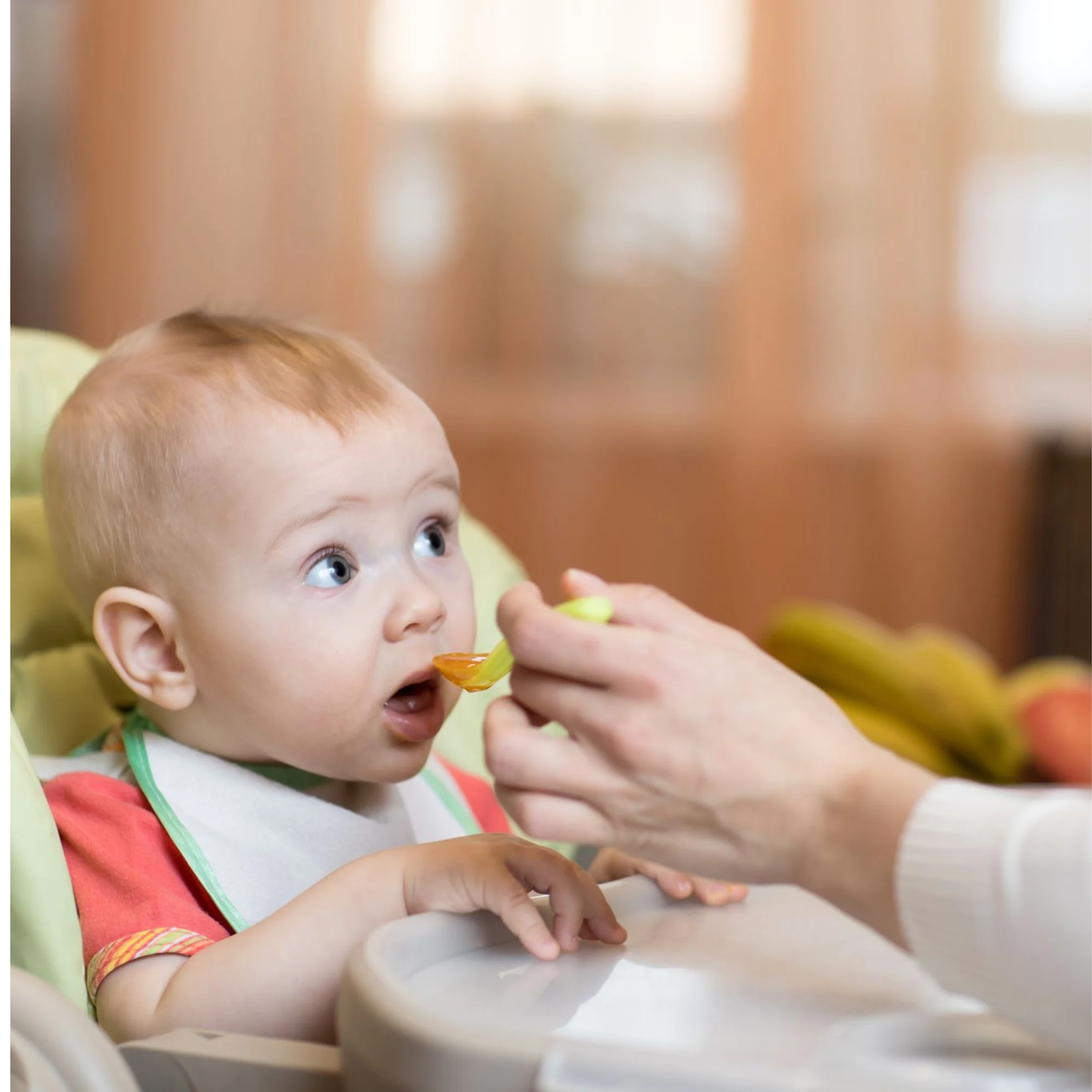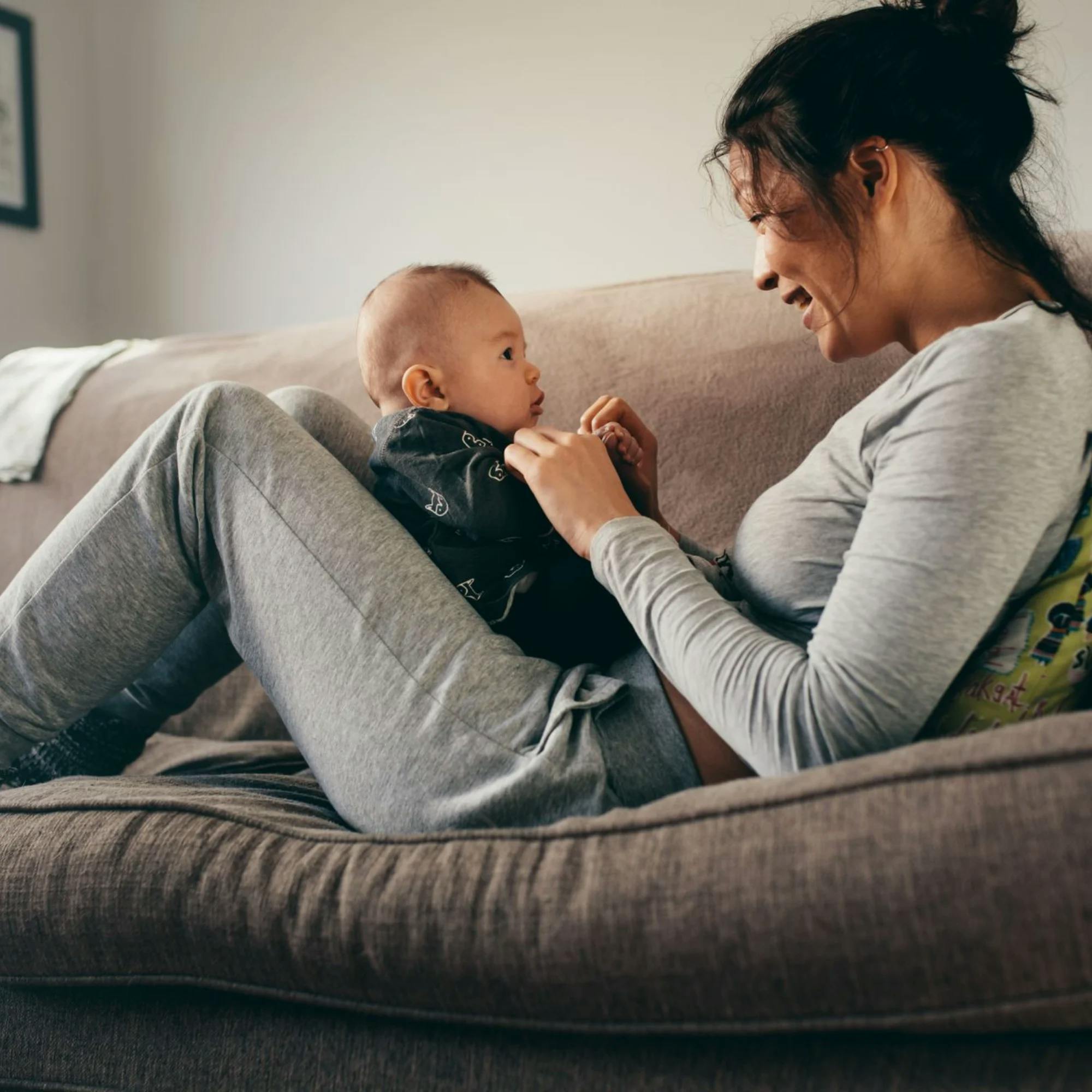Watching your baby learn new skills is an amazing experience! We understandably look for that first smile, word, and step. But did you know that there are milestones related to the seemingly simple noises that babies make?
If you’ve ever wondered "How do babies communicate?" or “What's my baby trying to tell me?,” read on! Let’s explore the sounds that babies make, the milestones related to those vocalizations, and what the research says about “baby language.” We’ll also share some tips parents can use to help their baby communicate.
Knowledge is power
Take 5 minutes to check your child’s speech milestones with our free online screener.
 Start the screener
Start the screenerCooing
Babies begin making their sweet little coos in the first few months of life, typically in the 0-3 month range. Coos are the simple, happy sounds you hear your baby make throughout the day–sounds like ooooooo, ahhhhhh, or mmmmmmmm.
Have you seen your baby do this as they’re looking around? Or maybe even looking at you? Coos are some of the earliest sounds babies make to communicate how happy and content they are. So the next time you hear a sweet coo, be proud of how secure and happy your little one is feeling!
Laughing
Around age 4 to 6 months, your baby will likely start laughing. This is one of the most fun milestones in a baby's first year.
You can make silly faces, make funny noises, or playfully bounce your baby up and down to try to get a laugh from them. You never quite know when that first giggle will appear, so keep your camera handy!
Your baby’s laughs may seem uncoordinated or soft in the beginning, like a little giggle. But over time, you’re bound to get some big belly laughs!

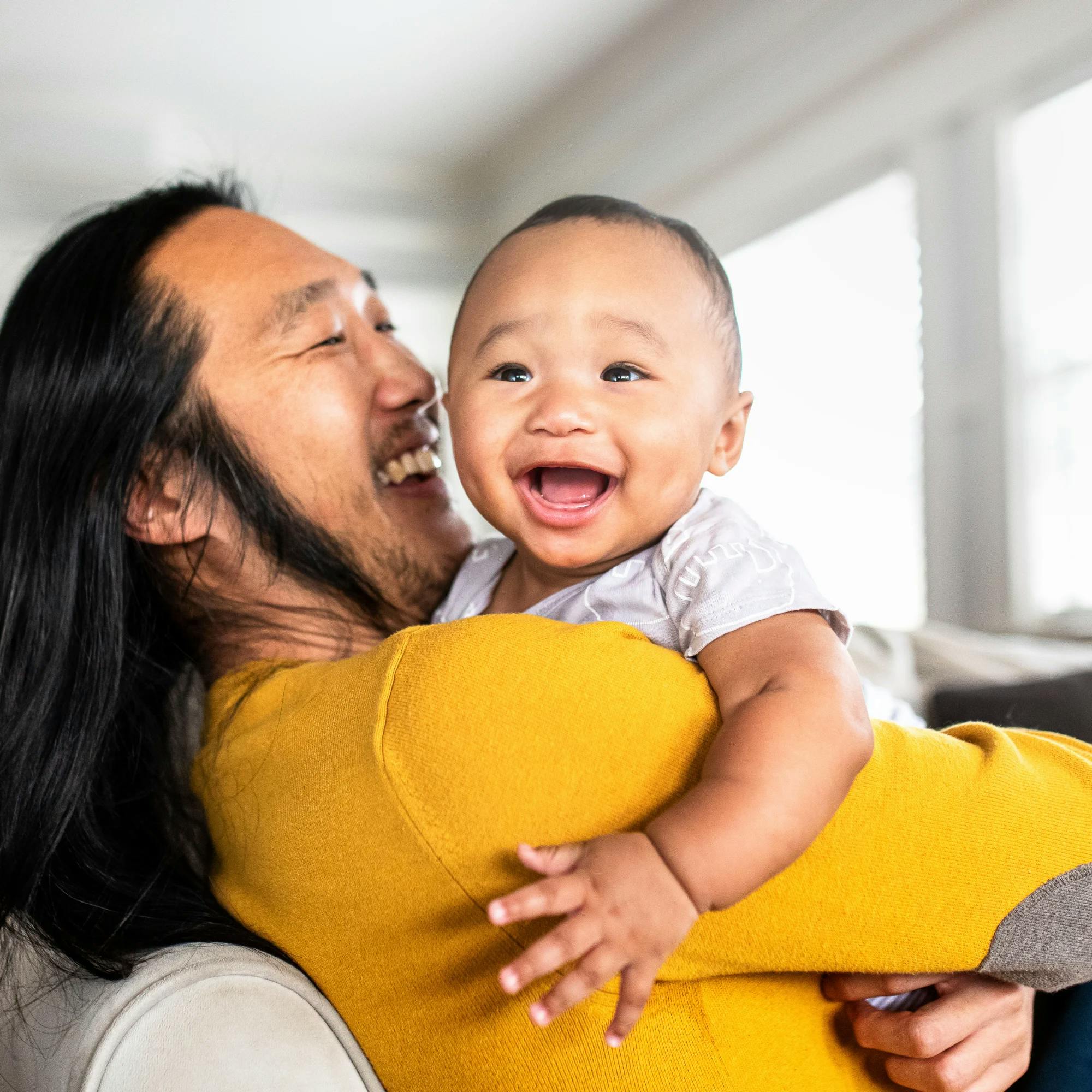
Raspberries
Another cute sound you may notice your child making is what we call “raspberries.” This is when they stick their tongue between their lips and blow–maybe giving you a spray in the process! Your baby could begin making these fun sounds around 4 to 6 months of age.
Try sitting face to face with your baby. Make the sound to them, and see what they do! One day they may do it right back to you. This is a way your baby can verbally “play” with others. It’s also a way they experiment with the different sounds their mouth can make.


Babbling
Those cute mamama and bababa sounds will likely come next in your baby’s development. Babies typically start babbling at around 7 to 9 months.
Babies begin babbling with what a speech therapist would call “strings” of babbles. Typically, these are a consonant and a vowel repeated over and over, like papapapa.
The first consonants you will likely hear developing in your child’s speech are /m/, /b/, /d/, /p/, /h/, /d/, and /w/. You should also hear various vowel sounds.
Over time, these babbles begin to take on meaning. Then they become a little shorter, as your baby realizes these sounds can make words. Around your child’s first birthday, you can be on the lookout for their first word. Maybe their dadada babbles become Dada to request or name their father. Or maybe buhbuhbuh becomes bye bye!


Intonation
Once your baby is 1 year old or a few months older, they may start saying some words, mixed in with some mature babbling. You should also hear them start to use intonation, similar to how adults speak.
When we speak, it’s not in a monotone. We move our voice up and down using different inflections. Think about how you might say to someone, “I am SO hapPY to see YOU!” Can you hear the slight sing-song that’s part of this sentence? Babies pick up on this and will start using it in their verbalizations.
Another example is the way we ask questions. Notice how the inflection rises at the end of a question: “Do you have practice todAY?” Babies notice subtle changes in intonation like this, as well. So one day, instead of your toddler simply saying “more,” they may ask “more?” with a rising inflection. Many parents might not recognize this milestone. But once you know to look for it, it’s an exciting skill that should be celebrated!

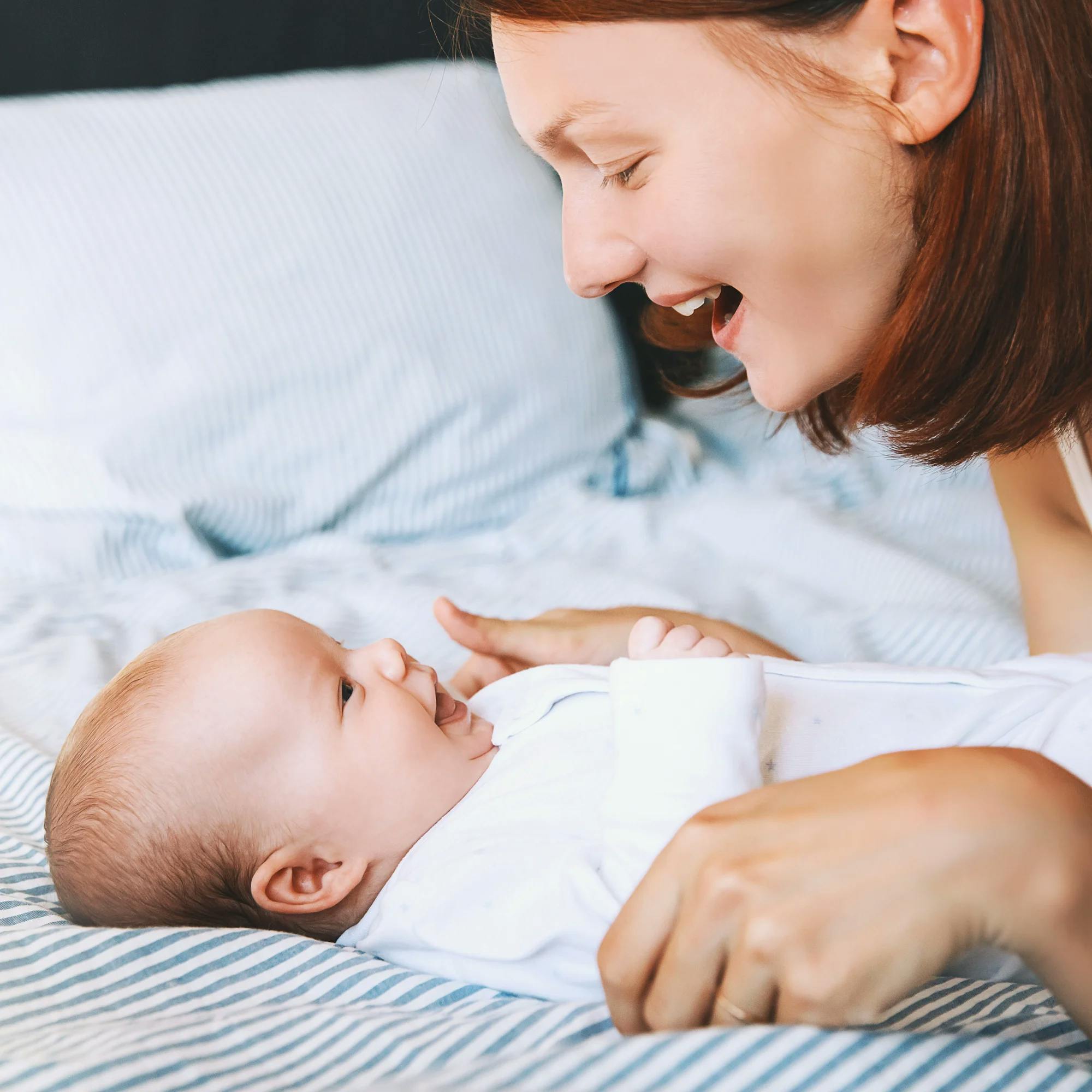
Understanding your baby’s sounds and cries
All parents and caregivers have been there–trying to figure out exactly what your little one wants or needs. Why are they upset? What are they trying to tell me?
Your baby may have different types of cries, but wouldn’t it be helpful if you knew what they wanted before the crying began? Priscilla Dunstan, an Australian parenting expert, created Dunstan baby language to reflect how babies from birth to 3 months communicate. She claims that babies around the world make specific sounds before they get upset and begin crying. Understanding these verbalizations can help you figure out what your baby needs or wants. You can think of it almost like a secret language that all babies “speak.”
The five sounds in Dunstan baby language are:
1 Neh = “I’m hungry!"
2 Eh = “Burp me!"
3 Eairh or earggghh = gassy or needs to poop
4 Heh = physically uncomfortable (hot, cold, or wet)
5 Owh or oah = sleepy
The effectiveness of Dunstan baby language is still being studied. But some research does back it up. For example, a study published in 2020 attempted to classify these baby vocalizations and resulted in an accuracy rate of 94.7 percent. Another study showed that being trained in Dunstan baby language lowered stress levels among new mothers.
While Dunstan baby language isn’t formally established, it’s certainly worth looking into–especially when your baby is crying and nothing seems to help. If you’ve got a little one at home, try it out, and see if they follow this pattern!
Regardless, one of the best things you can do for your baby’s language development is to interact with them. Make funny faces, sing songs, babble right back to them, and talk to them often. Even if your baby doesn’t yet have the words to respond, they’re soaking up everything they hear.
How Expressable Can Help
Concerned your child isn't reaching age-expected milestones? Looking for communication support from a professional? Expressable is a national online speech therapy practice serving children and adults. We treat all major areas of communication and feeding, offer flexible hours including evenings and weekends, and accept most major health insurance plans. We’re proud to have earned more than 3,000 5-star reviews from our clients (4.9/5 average).
Our therapy model is centered on parent and caregiver involvement. Research proves that empowering caregivers to participate in their loved one’s therapy leads to better outcomes. That’s why we combine live, 1-on-1 speech therapy with personalized education and home practice activities for faster progress.
Communication is more than words. It’s how we share how we feel and show who we are. We’re here to help you or your child do just that.

 Abby Barnes, M.S., CCC-SLP
Abby Barnes, M.S., CCC-SLP